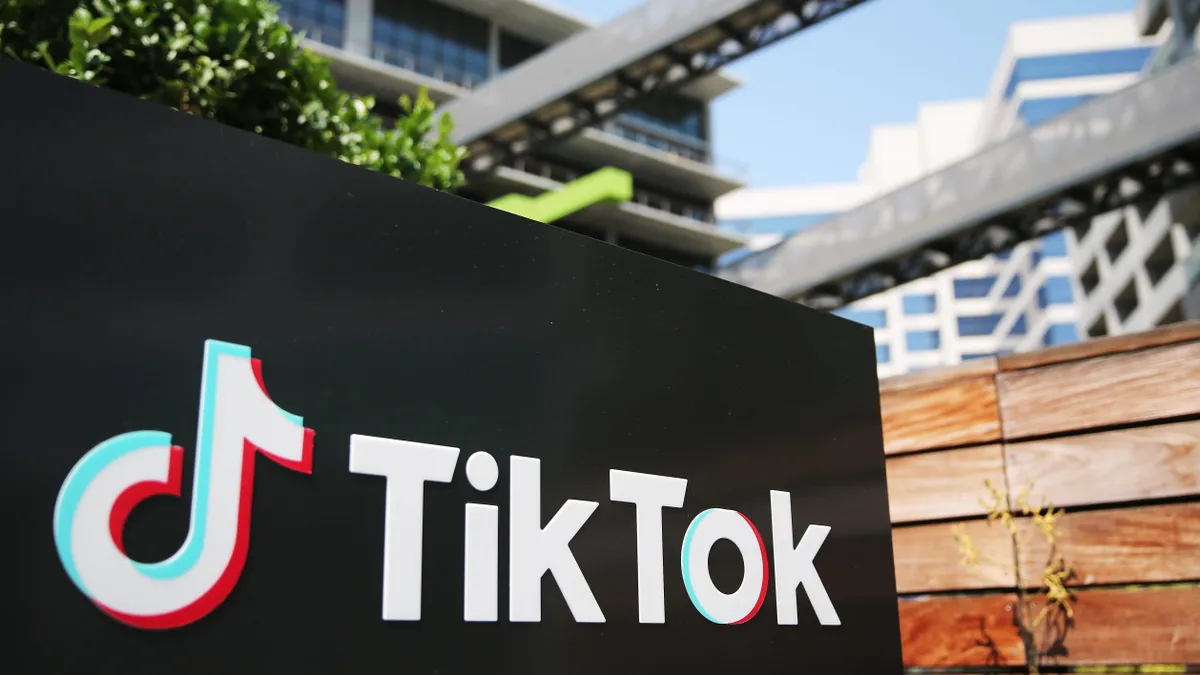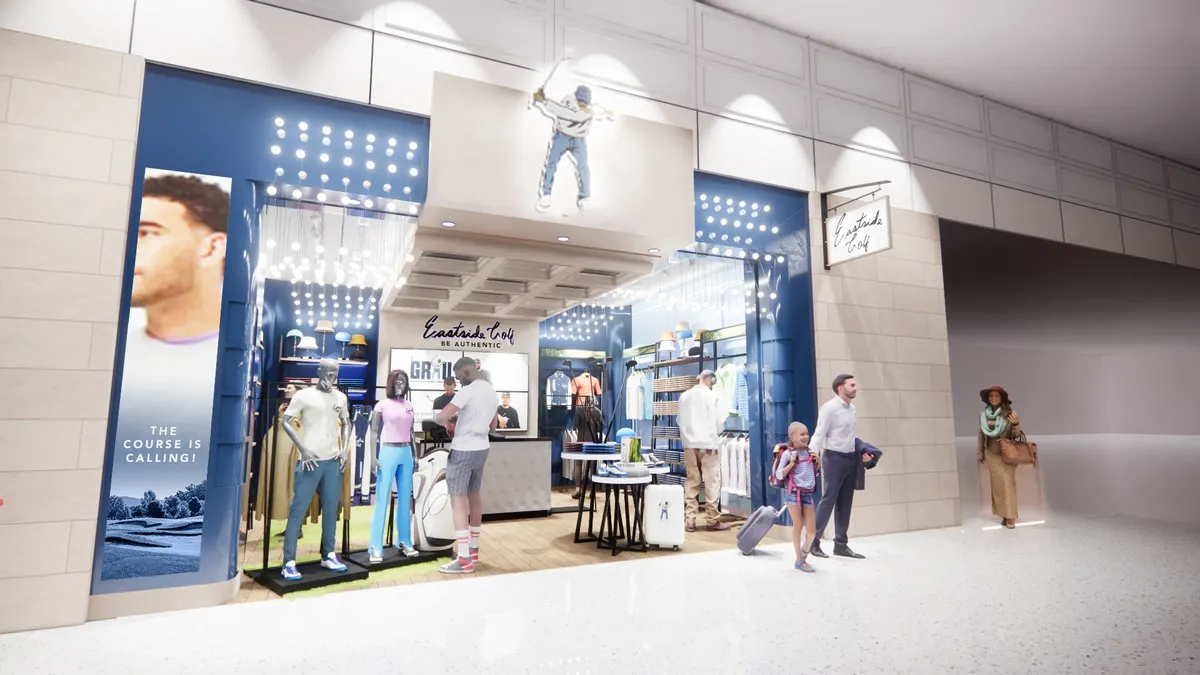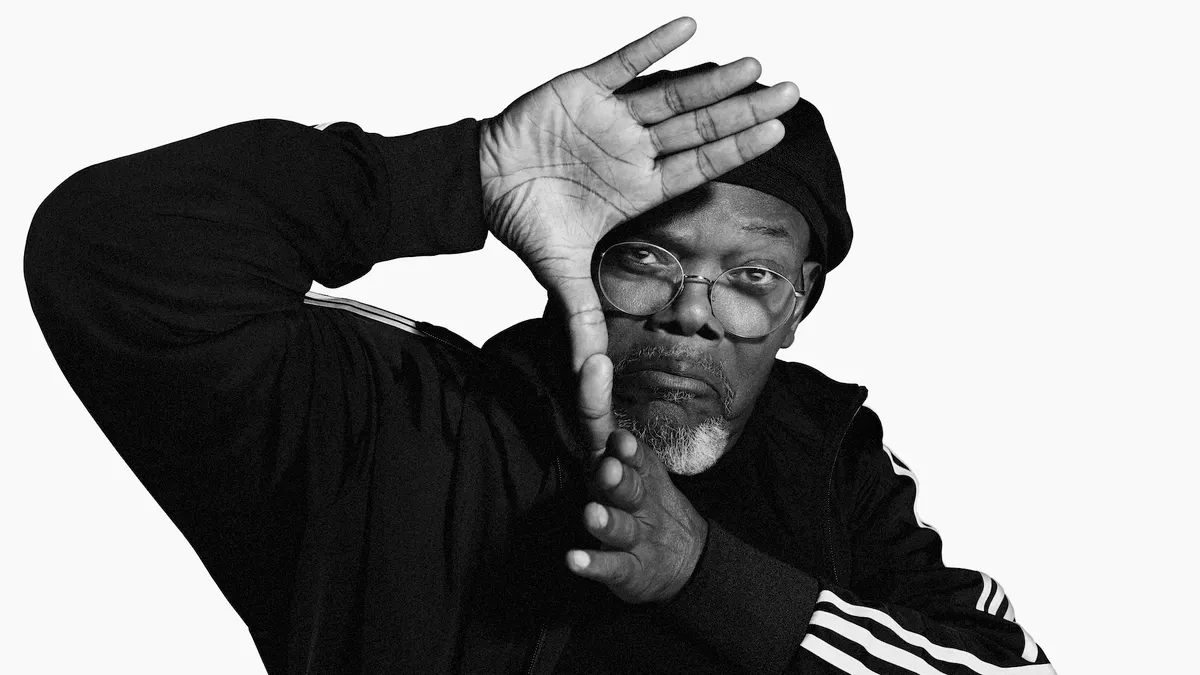In good years, the holidays are a bright spot in consumers' lives and, consequently, in retailers' pockets. In bad years — such as those where a pandemic creates financial uncertainty and record unemployment — the picture is bleaker.
There are many different competing factors at play in consumer behavior this year, said Karthik Easwar, associate teaching professor of marketing at Georgetown. On one hand, forced distance as a result of the pandemic, leading to fewer holiday parties and visits from relatives, puts a damper on holiday spirits, and many consumers remain anxious about their finances and job security in an uncertain world.
On the other hand, those fortunate enough to feel somewhat secure in their health and finances might lean more heavily into the holidays "to make up for this year," Easwar said. That could be through decorating the house more, spending more time doing holiday activities like baking cookies, and using savings from the lack of travel and dining out to beef up holiday presents. But it's likely to be a tale of two holidays across the U.S.
"There is the tightening of the belt strategy, which is, we don't know how soon we might come out of this. We don't know about the long-term economic ramifications of this pandemic, so what do we have to do now? Let's tighten our belt, let's be a little more careful with what we spend, and thoughtful," Easwar said. He added that this is a common approach to uncertainty, but that others may spend more, thanks to the "what the hell" effect. "You're so depleted and stressed out and emotionally drained from the last seven months, you want to buy some presents, and you go: 'You know what? We're breaking the bank this time, and we'll figure it out in the future.'"
Recognizing a potentially dual-pronged holiday season, Deloitte released a K-shaped prediction for the season, including one scenario where anxiety and other factors hold sales growth to 0% to 1%, and another where optimism about a vaccine or more government-funded pandemic relief allows sales growth to reach between 2.5% and 3.5%.
Sucharita Kodali, a retail analyst at Forrester, thinks that for the wealthy, competing trends around fewer gatherings, fewer gifts to buy, more savings and more incentive to make this year a good one will roughly balance each other out. But on the other side of the economic divide, many consumers will shift their behavior to favor more price-conscious options.
"When there's financial uncertainty, people will buy bare minimums, but usually also they're trading down," Kodali said. "They may have purchased something at the Gap in the past — they're going to be purchasing at Kohl's or Old Navy this year."
As retailers look to navigate a year that has been fraught for all and financially devastating for many, they're also dealing with the loss of holiday "anchors" like Black Friday or family-specific traditions, Easwar said. Consumers will still be able to find the deals from popular shopping days, as evidenced by the score of retailers that have announced Black Friday deals beginning in October, but the spirit of some holiday experiences will likely be lost.
Retailers will need to find a way to make up for that if they want to be successful this year, Dana Telsey, CEO of Telsey Advisory Group, said.
"Everyone's come through a really difficult 2020. And just the theme of joy: How can you make it be a joyful holiday?" Telsey said. "Especially at a time when typical traditions may not be the same as in the past, as families may not be able to get together in person."
Mall Santa got run over by a reindeer
The screams of small children are not unusual in malls, especially during the holidays, when parents can be found wrangling their party dress-wearing children into line to visit the big man in the red suit. But if anything goes against the COVID-19 playbook, it's the trifecta of large crowds, close physical contact and indoor spaces that comprise a visit to see a mall Santa.
"That one seems like something, if I was someone running a mall, that it would be wise to not do," Easwar said, adding that it's a high-contact activity and the risk-reward might not be worth it. But inevitably, some malls will.
For those that do, it may mean a more socially distanced experience, Kodali added, with photographs taken from a distance, or Santa taking present requests outside instead. Whatever approach malls take to keeping the holiday spirit alive, "they've had months to game plan for it," Easwar said, and come up with safe solutions.
For Macy's iconic Santaland experience, that means going virtual. The holiday tradition has been in place since 1861, but will be converted to an "interactive, virtual experience" for the first time this year, from Nov. 27 to Dec. 24, a spokesperson told Retail Dive in an email.
"Macy's Santaland at Home will safely bring the wonder of this cherished holiday tradition to families nationwide through an immersive, fun and whimsical digital-only experience," the spokesperson said.
For other traditionally in-store events, the retailer will make some virtual and limit access to others, and has spread out its promotional calendar to hopefully discourage crowds. Stores will focus on traffic flow during the holidays to ensure customer safety, the retailer said, and stores will have additional cleaning during open hours, occupancy checks to "anticipate and mitigate crowds" and protective wear for employees.
"Malls are going to be in trouble. They need to figure out financially how they can get through this. There's no other answer other than that."

Sucharita Kodali
Retail Analyst at Forrester
Although consumers have been avoiding physical stores for some time thanks to the pandemic, Kodali says malls shouldn't have any problem driving traffic. The problem, rather, will be understanding capacity and not driving traffic when malls can't handle the volume of customers. Occupancy limits for both malls and individual stores will be a problem for sales volume, Kodali said, and even with more consumers looking to make purchases during the holidays, if those are made online instead of in stores it will "substantially curtail the amount of spend."
"I haven't heard of anybody saying, 'Let's figure out a way to just cram physical environments with as many people as possible,'" Kodali said of the potential for crowds from in-store holiday events. "I don't think that any responsible business person feels that that makes any sense at all."
Telsey added that safety precautions are necessary to make consumers feel comfortable being inside, even if it means fewer customers. "There isn't any mall or store that we believe isn't taking them," Telsey said. "I think that's the priority."
However, malls and their tenants will have to make better use of the times when shoppers do come in. Shoppers will likely take fewer trips, but spend more when they do visit, and will likely also make use of BOPIS and other convenient pickup options, which leaves open the opportunity for add-on purchases when customers come pick up their packages, Telsey said.
"Malls are going to be in trouble. They need to figure out financially how they can get through this. There's no other answer other than that," Kodali said. "I don't think that the challenge is a marketing or a customer challenge. I think the bigger challenge is a financial one for them. If they have bills to pay, how are they going to manage to meet those bills, especially when half of their tenants aren't paying their bills, either?"
One way to mitigate the anxiety around indoor spaces, and a solution that's high on the retailer pandemic playbook, is making use of outside spaces. Lowe's is holding curbside trick-or-treating this year, and Walmart is using its parking lots to host fall events. While not necessarily sales movers, these kinds of safe outdoor experiences could be good ways for retailers to build up goodwill during a particularly tough holiday season.
"That magic is going to be created from innovation."

Dana Telsey
CEO of Telsey Advisory Group
"It's probably not going to get me to buy their drill," Easwar said of Lowe's trick-or-treating events. "But over the long term, it might build that positive brand equity with their consumers that translates to sales. That is an opportunity and a way to look at the holidays as, 'I may not be able to sell you this product in store, but I can still show you I care about you. And I'll be here for you in 2021 with great product, great value and support as you might need it.'"
Telsey noted these events are likely to continue throughout the season, but they will be limited in some parts of the U.S. by cold winters.
Perhaps the biggest takeaway is that the experiences that make the holidays "the holidays" will likely be reimagined considerably. Macy's noted that it's rethinking local tree lightings and holiday windows but is "confident that we will deliver a great experience for our customers."
"We'll help kick off the holidays in our communities. And we will help customers celebrate at home with family and friends," a spokesperson said, citing Macy's Santa letter-writing campaign and the virtual Santaland experience. "2020 has been a challenging year, and we need these moments of joy more than ever."
And with the potential for a tempered holiday season, creating that holiday magic may be more important for retailers than in the past.
"That magic is going to be created from innovation," Telsey said. "It's going to be created from personalization, localization, and retailers reaching out to consumers and consumers willing to embrace it."
Can holiday spirit go digital?
Even with retailers adapting their in-store events, many shoppers are likely to shift their shopping online, significantly impacting foot traffic. Just under two-thirds of shoppers plan to make most of their purchases online, according to PwC, with e-commerce predicted to grow anywhere from 25% to more than 40%, depending on the firm.
Theoretically, that shouldn't be a problem for retailers as long as they have an up-to-date digital experience, Keith Nealon, CEO of Bazaarvoice, said. But not all do.
"If my customers are going to do more online and less in store, but I keep 100% of the pie, it's not a threat, per se. It's just a reallocation of how they're going to buy from me," Nealon said. "But in reality, retailers are responding at different rates to that. The only way it's a real threat is if I decide I'm not interested in e-commerce and never will be — then I'm screwed."
The challenge will be trying to replicate some of that holiday excitement through e-commerce, a much less personal channel than brick and mortar. For example, around Black Friday, when sentiment may be lower than usual and families may be buying more online, either because they want to avoid stores or because the retailers they buy from choose not to open on that day, retailers could prep shoppers to buy online by communicating the benefits of that experience, Easwar said.
Black Friday had already extended into a week-long event before this year, he noted, and retailers can take advantage of that trend now to decide when deals drop on their own terms, and potentially roll out more of them throughout the month. Some major retailers, including Walmart, Amazon, Target and Kohl's, have already taken that path, choosing to start rolling out Black Friday deals in October.
"Part of what the internet is allowing and what it has created is this 'You choose when you're ready to do this, we'll be here for you' sort of approach from retailers," Easwar said. "I think that we've already seen that happen where you don't have to come at midnight on Friday, or log in at 6 a.m. on Monday, because the deal is here earlier — and I think we'll only get more of that now where you'll see retailers promote things more early and more often."
Kodali added that compelling sales are one of "the most effective" things retailers can do to drive traffic online, but they'll have to balance building excitement with not setting shipping expectations too high.
"It's people in search of products in the physical world. In the digital world, it's products in search of people."

Keith Nealon
CEO of Bazaarvoice
Marketers during the holidays will also have to focus on how to make their campaigns stand out from other retailers, and how to translate the physical connection stores bring to an online format. To Nealon, that means being more creative with content, like sending shoppers small gifts or samples with their purchases, doing a livestream where certain products are only available at that time, leaning into personal shopper and virtual stylist services, or creating fun branded videos to address the realities of this year's season, like cooking dinner for a smaller group.
"It's people in search of products in the physical world," Nealon said. "In the digital world, it's products in search of people. In other words, we're doing our thing online and brands are trying to capture our attention … so in a products-in-search-of-people world, how do you stand out above the clutter? That really comes down to creative, engaging content."
Already, brands are making the pivot to virtual experiences, both by necessity and to try out new ideas. Macy's Thanksgiving Day Parade, for example, will be entirely virtual this year, but will still feature the "signature giant character balloons, animated floats, wacky clowns and street performers, musical acts, Broadway shows and the one-and-only Santa Claus," a Macy's spokesperson said, even if it won't be viewable in-person, or feature shots of the crowd cheering.
"We hope that turning on NBC to watch our annual Thanksgiving Day spectacle will bring a much-needed sense [of] normalcy in these challenging times and can't wait to help the nation celebrate the start of the holiday season," the spokesperson added.
And it's not just Macy's. Saks Fifth Avenue is making its holiday window unveiling and light shows virtual, while Sam's Club introduced a Griswold-inspired virtual holiday shopping experience that lets users go through the famous, extremely well-lit house and see new products available at Sam's Club. Nordstrom, for its part, is making gifting experts available online and also through appointments in stores.
"That's what you need to look for, is what's going to spark that inspiration and excitement."

Karthik Easwar
Associate Teaching Professor of Marketing at Georgetown
In addition to beefing up the online experience to make it more enjoyable for customers, retailers can also lean into other channels, like catalogs. Catalogs are already especially prevalent during the holidays, but they could be particularly useful this year as retailers look for ways to stand out among the thousands of emails that have arrived in consumer inboxes since the pandemic began.
Kodali noted it would be a smart move, but that retailers might not be pursuing it as much this year because of smaller marketing budgets. If they do pursue it, it might be from a "hyper-targeted" perspective — essentially, only hitting shoppers that already buy with the company.
"We don't have the luxury of using the store as a marketing tool in the same way we used to," Easwar said, noting that the loss of physical stores might lead marketers to more frequent emails or really well-developed catalogs. "You get that sort of beautiful experience in the catalogs that you would get wandering the store."
For others, it could mean engaging content on inspirational social platforms like Instagram or Pinterest. Easwar pointed out that, similarly to catalogs, retailers could provide 3D interfaces customers could explore and shop through, so that they would still be able to create the holiday vignettes they might otherwise put in a store.
"That's what you need to look for, is what's going to spark that inspiration and excitement," Easwar said. "It's going to be something more vivid, it's going to be something a little more immersive, and it's going to be something, I think, that tries to connect to them in some more emotional way than just the practical of, 'This is on sale, 50% off.'"
Some practical things will likely change in retailer strategies this holiday season — like more budget going toward improving the digital experience than in-store decorations, or the promotion of some products over others thanks to pandemic-era trends like baking at home — but the desire for a more meaningful shopping experience will remain. Retailers will just have to navigate how to communicate that safely.
"Those emotional connections are what are going to resonate," Easwar said, "because that's, to some extent, what we haven't gotten as much of in 2020."





















